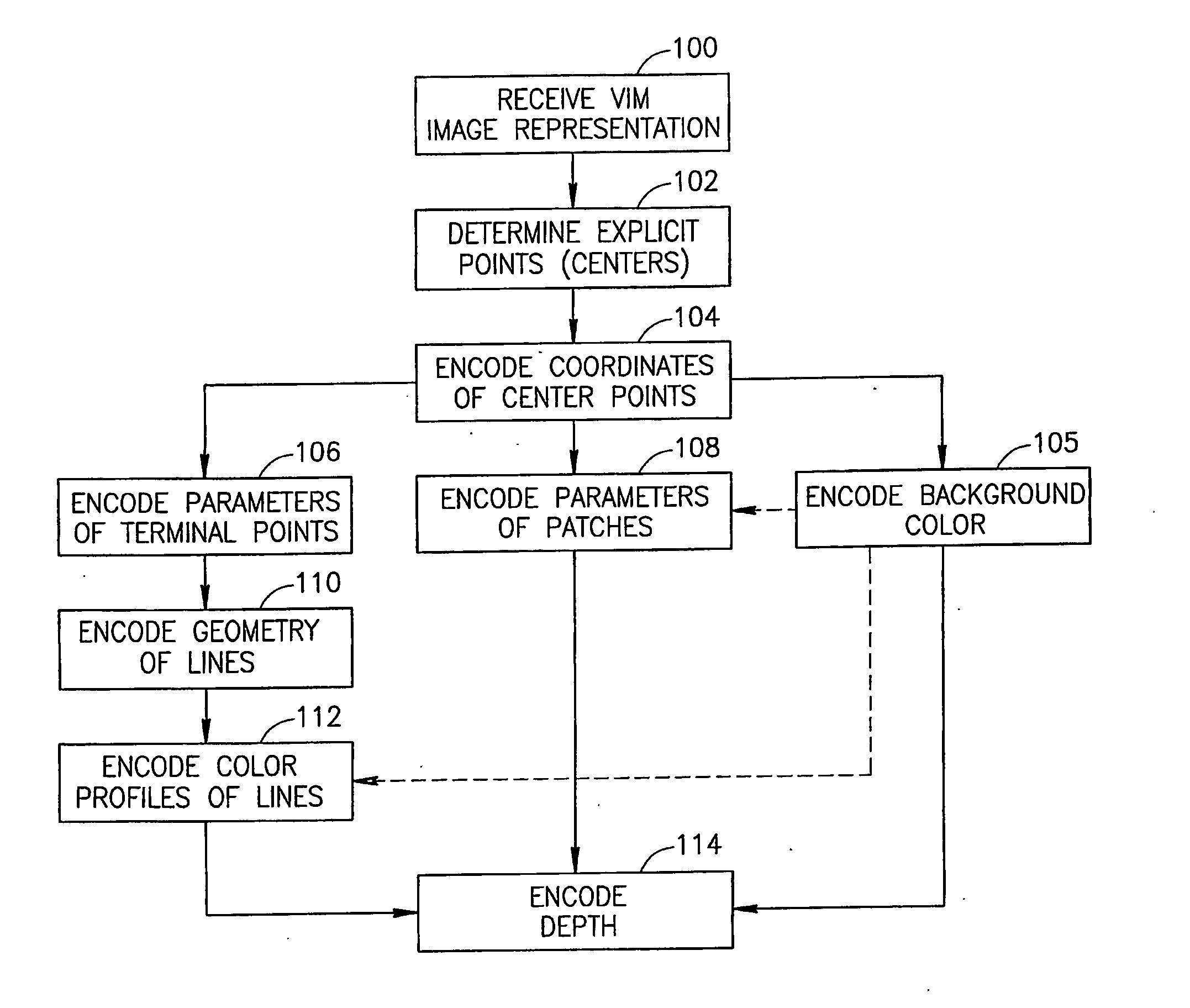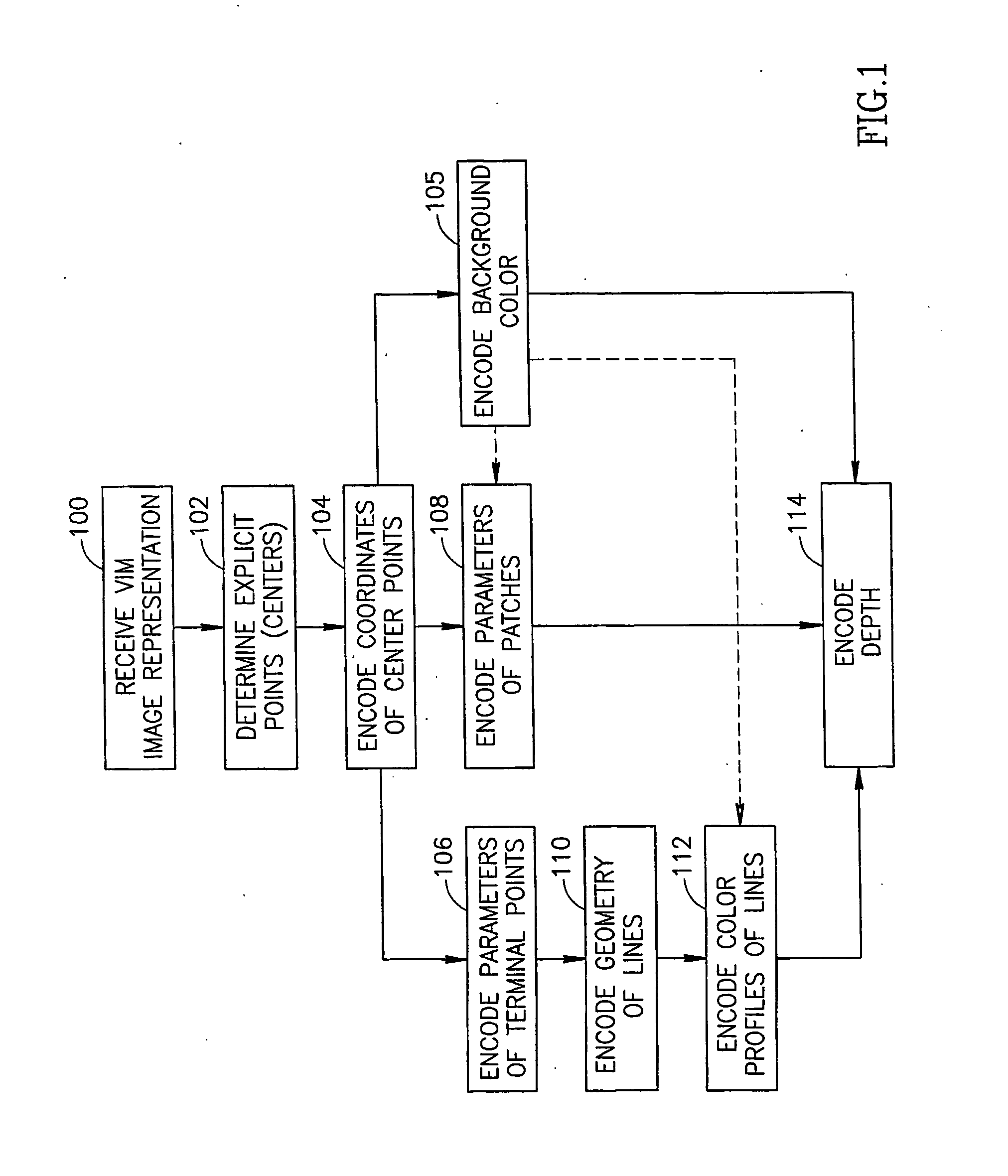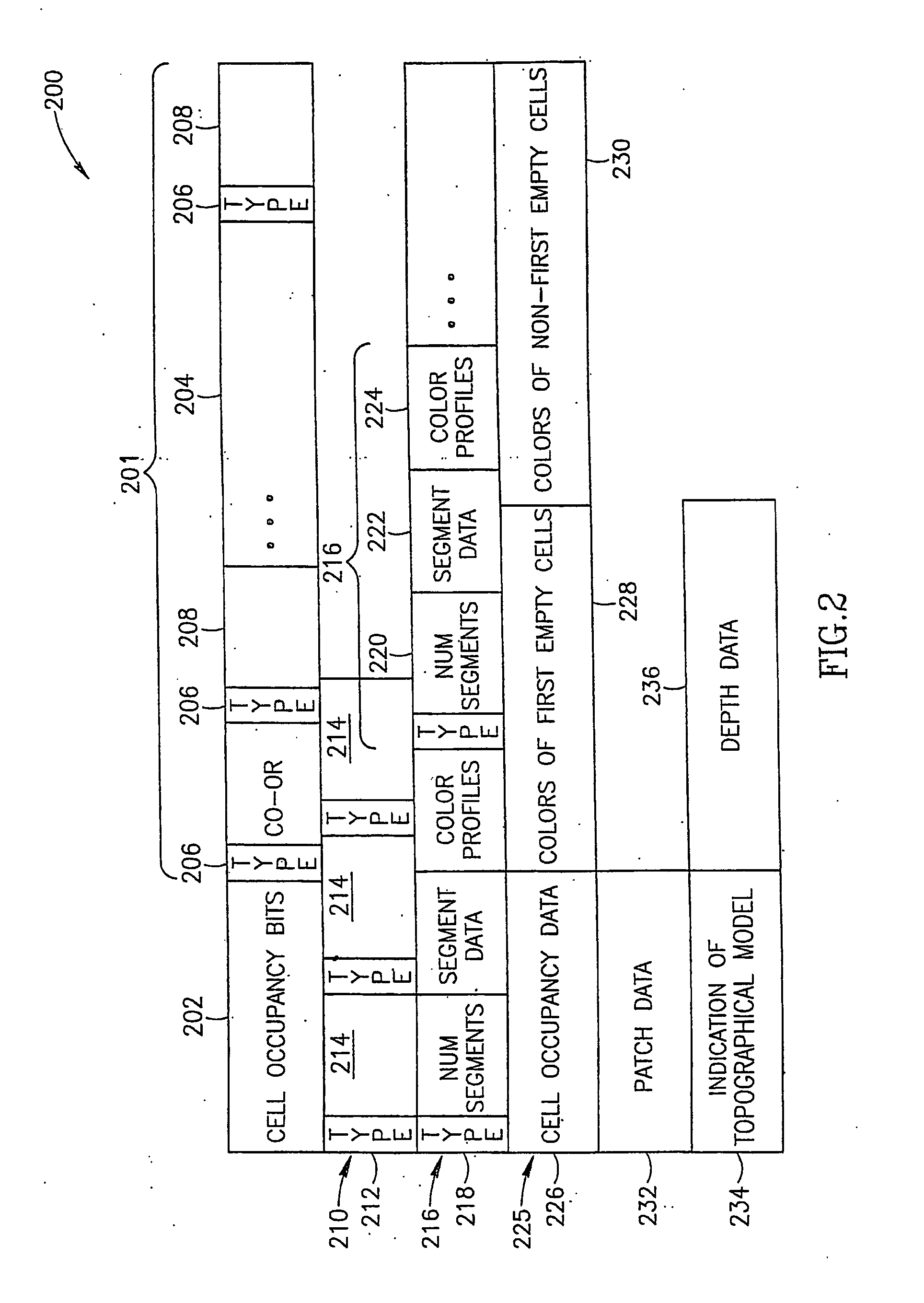Encoding of geometric modeled images
a geometric model and image technology, applied in image data processing, instruments, character and pattern recognition, etc., can solve the problems of large amount of storage space and transmission bandwidth, large number of parameters, and inability to achieve high compression ratios of image representation methods, etc., to achieve relatively small effect of quality cancellation, less damage, and relatively large effect of compression
- Summary
- Abstract
- Description
- Claims
- Application Information
AI Technical Summary
Benefits of technology
Problems solved by technology
Method used
Image
Examples
Embodiment Construction
Overview
The following description provides examples of the features of the present invention with relation to the VIM data structure described in the patent applications referenced in the related applications section above.
In accordance with some embodiments of the invention, the following description assumes that images and / or video streams (as well as their compression) are generated by authoring tools optionally hosted by relatively powerful processing tools. In some embodiments of the invention, the determination of whether to use one or more compression methods and / or sophisticated authoring methods may depend on the extent of processing power of the processing tool. The compressed format of the images and / or video streams are optionally planned to allow display by low processing power tools, such as battery powered cellular units.
One property of VIM in accordance with some embodiments of the invention, is that one way to explain and illustrate the VIM representation is ...
PUM
 Login to View More
Login to View More Abstract
Description
Claims
Application Information
 Login to View More
Login to View More - R&D
- Intellectual Property
- Life Sciences
- Materials
- Tech Scout
- Unparalleled Data Quality
- Higher Quality Content
- 60% Fewer Hallucinations
Browse by: Latest US Patents, China's latest patents, Technical Efficacy Thesaurus, Application Domain, Technology Topic, Popular Technical Reports.
© 2025 PatSnap. All rights reserved.Legal|Privacy policy|Modern Slavery Act Transparency Statement|Sitemap|About US| Contact US: help@patsnap.com



